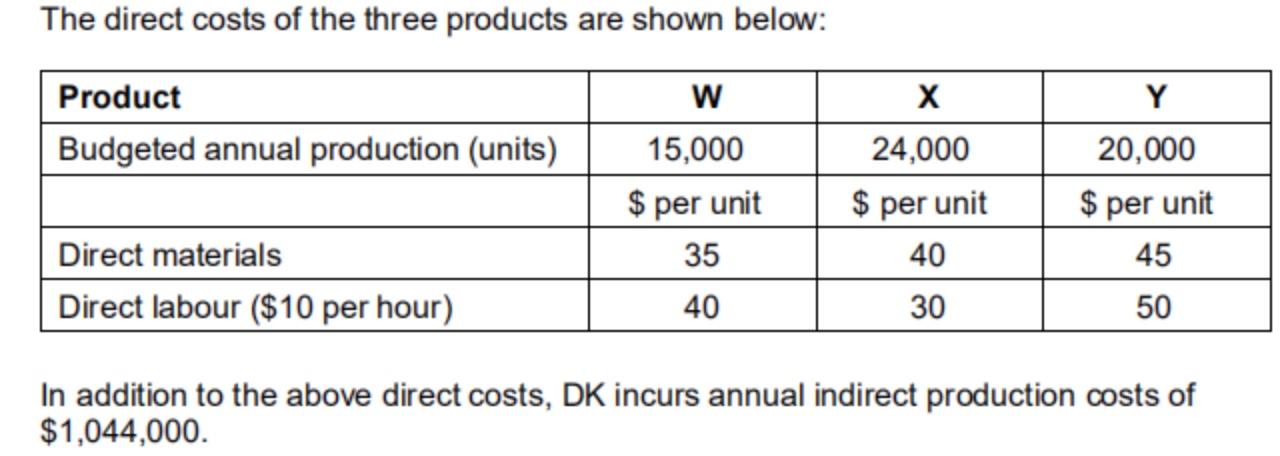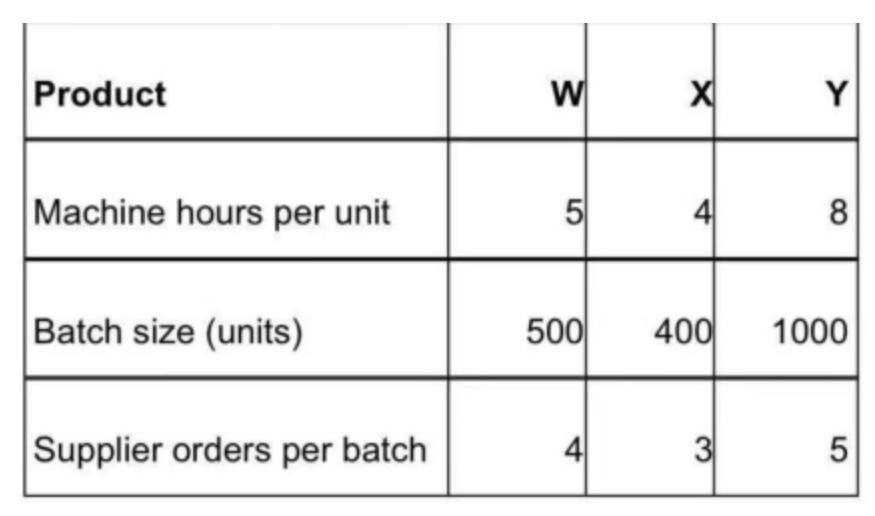Question
DK manufactures three products, W, X and Y. Each product uses the same materials and the same type of direct labour but in different quantities.
DK manufactures three products, W, X and Y. Each product uses the same materials and the same type of direct labour but in different quantities. The company currently uses a cost plus basis to determine the selling price of its products. This is based on full cost using an overhead absorption rate per direct labour hour. However, the managing director is concerned that the company may be losing sales because of its approach to setting prices. He thinks that a marginal costing approach may be more appropriate, particularly since the workforce is guaranteed a minimum weekly wage and has a three month notice period.
The direct costs of the three products are shown below:

(a) Calculate the full cost per unit of each product using KLs current method of traditional costing.

The following additional data relate to each product:

(b) Calculate the full cost per unit of each product using activity based costing.
The direct costs of the three products are shown below: In addition to the above direct costs, DK incurs annual indirect production costs of $1,044,000. An analysis of the company's indirect production costs shows the following: \begin{tabular}{|l|r|r|r|} \hline Product & W & X & Y \\ \hline Machine hours per unit & 5 & 4 & 8 \\ \hline Batch size (units) & 500 & 400 & 1000 \\ \hline Supplier orders per batch & 4 & 3 & 5 \\ \hline \end{tabular}
Step by Step Solution
There are 3 Steps involved in it
Step: 1

Get Instant Access to Expert-Tailored Solutions
See step-by-step solutions with expert insights and AI powered tools for academic success
Step: 2

Step: 3

Ace Your Homework with AI
Get the answers you need in no time with our AI-driven, step-by-step assistance
Get Started


